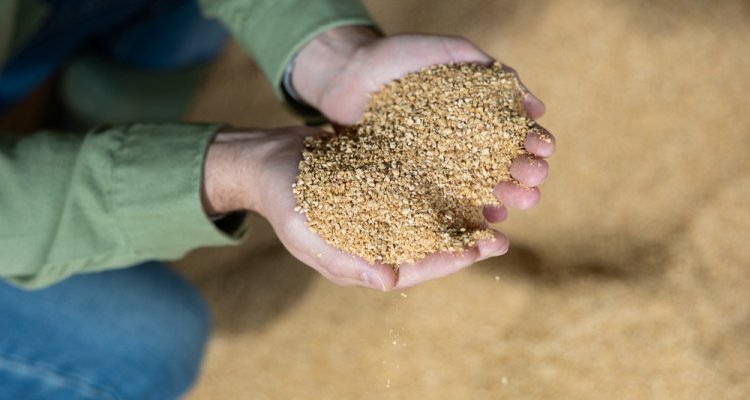
News
After two years of war in Ukraine, the world's poor have less access to food
Wageningen Economic Research conducted a scenario study examining the global effects of the war in Ukraine on food security and the environment. Two years later, poorer people in low and middle-income countries in particular have less access to food, according to the study commissioned by the Ministry of Agriculture, Nature and Food Quality.
Russia's invasion of Ukraine on 24 February 2022 immediately raised food security concerns around the world. Before the war, Russia and Ukraine together accounted for 28 percent of the world's total wheat exports. Of all the world's sunflower oil, as much as 65 percent came from the countries that have now been at war for two years. Low and middle-income countries in the Middle East and Africa in particular relied heavily on essential food products from Russia and Ukraine, which include corn, sunflower seeds and rapeseed.
Brightspace
In the Horizon Europe BRIGHTSPACE project, environmental implications (greenhouse gases and biodiversity) were added to the study. The computer-based MAGNET model was used for this purpose. This equilibrium model for the world economy describes the development of prices, production and trade at the level of individual countries. Wageningen Economic Research uses this model to calculate the consequences of changes in the world economy and policy changes, such as international trade barriers. On the basis of a number of scenarios (higher trade prices, production cuts, higher energy prices), the model calculated the impact of war on global agricultural production, trade flows between countries, market prices, food security, land use and greenhouse gas emissions.
Economies suffer
The study starts by showing that the economies of Ukraine (-33% over the 2022-2024 period) and Russia (-11%) are strongly affected by the war. Elsewhere in the world, the impact on GDP is strongest in Central Asia, a region that traditionally has strong trade ties with Russia. Rising energy prices in particular are making themselves felt here. The elimination of exports from both countries has actually increased agricultural production in other parts of the world. In most regions, including the EU, this increase was around 5 percent. In North Africa, production increased by 7% and in the rest of Africa by as much as 11%.
The study also shows that prices for primary agricultural products such as wheat, other grains and oilseeds have risen sharply on the world market. This is partly due to declining exports from Ukraine and Russia, but significantly higher energy prices and more expensive fertilizers also play a role. This in turn translates into sharply higher food prices. These are felt most strongly in low and middle-income countries such as Turkey, Egypt and countries in the Middle East. These countries have limited ability to expand their domestic production. They are therefore vulnerable to price fluctuations on the world market. With food prices rising faster than the wages of unskilled workers, this leads to the problem of making it harder for them to afford food. Increased grain prices are particularly to blame, as the diet of poor people consists mainly of grains.
Environmental Impact
The war in Ukraine also has significant environmental consequences. Calculations from the study show, on the one hand, that the total greenhouse gas emissions of the entire economy have declined, as higher energy prices have partially replaced fossil fuels with biofuels and reduced fossil energy and increased renewable energy consumption. On the other hand, as a result of the war, more agricultural land has been put to use elsewhere in the world. Especially in Central and South America, agricultural land has increased. This has increased greenhouse gas emissions directly attributable to land use, but less than the lower emissions in the rest of the economy. There is also a higher risk of biodiversity loss in these regions.
A special aspect is that the study looked not only at food availability, but also at access to food. "This is far more difficult to map," said Wageningen Economic Research lead researcher Hans van Meijl: "You’ll need to know, for example, what many people in different labour types earn and what they have to spend on food. That income side in particular is usually ignored in research. In this study, we included this very aspect explicitly in order to determine the impact of the war on access to food."